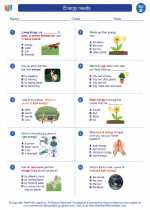Dispersion
Dispersion is the process of separating light into its individual wavelengths, resulting in the formation of a spectrum. This occurs when light passes through a medium, such as a prism or a droplet of water, and is refracted at different angles depending on its wavelength. The result is a spread of colors, with red light being refracted the least and violet light being refracted the most.
Causes of Dispersion
- Refraction: The bending of light as it passes from one medium to another, causing different wavelengths to be refracted by different amounts.
- Wavelength-dependent Speed: Different colors of light travel at different speeds through a medium, leading to their separation.
Applications of Dispersion
- Rainbows: The dispersion of sunlight by water droplets in the atmosphere results in the formation of rainbows, where the different colors are visible.
- Spectroscopy: The study of the interaction between matter and electromagnetic radiation, which relies on the dispersion of light to analyze the composition of substances.
Study Guide
Here are some key points to remember about dispersion:
- What is dispersion?
- What causes dispersion?
- How is dispersion applied in real-world scenarios?
Understanding dispersion is crucial in various scientific fields, such as physics, astronomy, and chemistry. Mastery of this concept allows for a deeper understanding of the behavior of light and its interaction with matter.
[Dispersion] Related Worksheets and Study Guides:
.◂Science Worksheets and Study Guides Second Grade. Energy needs
Study Guide Energy needs
Energy needs  Worksheet/Answer key
Worksheet/Answer key Energy needs
Energy needs  Worksheet/Answer key
Worksheet/Answer key Energy needs
Energy needs  Worksheet/Answer key
Worksheet/Answer key Energy needs
Energy needs 

 Worksheet/Answer key
Worksheet/Answer key
 Worksheet/Answer key
Worksheet/Answer key
 Worksheet/Answer key
Worksheet/Answer key

The resources above cover the following skills:
Concepts of Physical Science (SB1, SB2, SB3, SB4)
The student demonstrates an understanding of motions, forces, their characteristics, relationships, and effects by recognizing that objects can be moved without being touched (e.g., using magnets, falling objects, static electricity).
Concepts of Physical Science: A student should understand and be able to apply the concepts, models, theories, universal principles, and facts that explain the physical world. A student who meets the content standard should:
Develop an understanding of motions, forces, their characteristics and relationships, and natural forces and their effects.